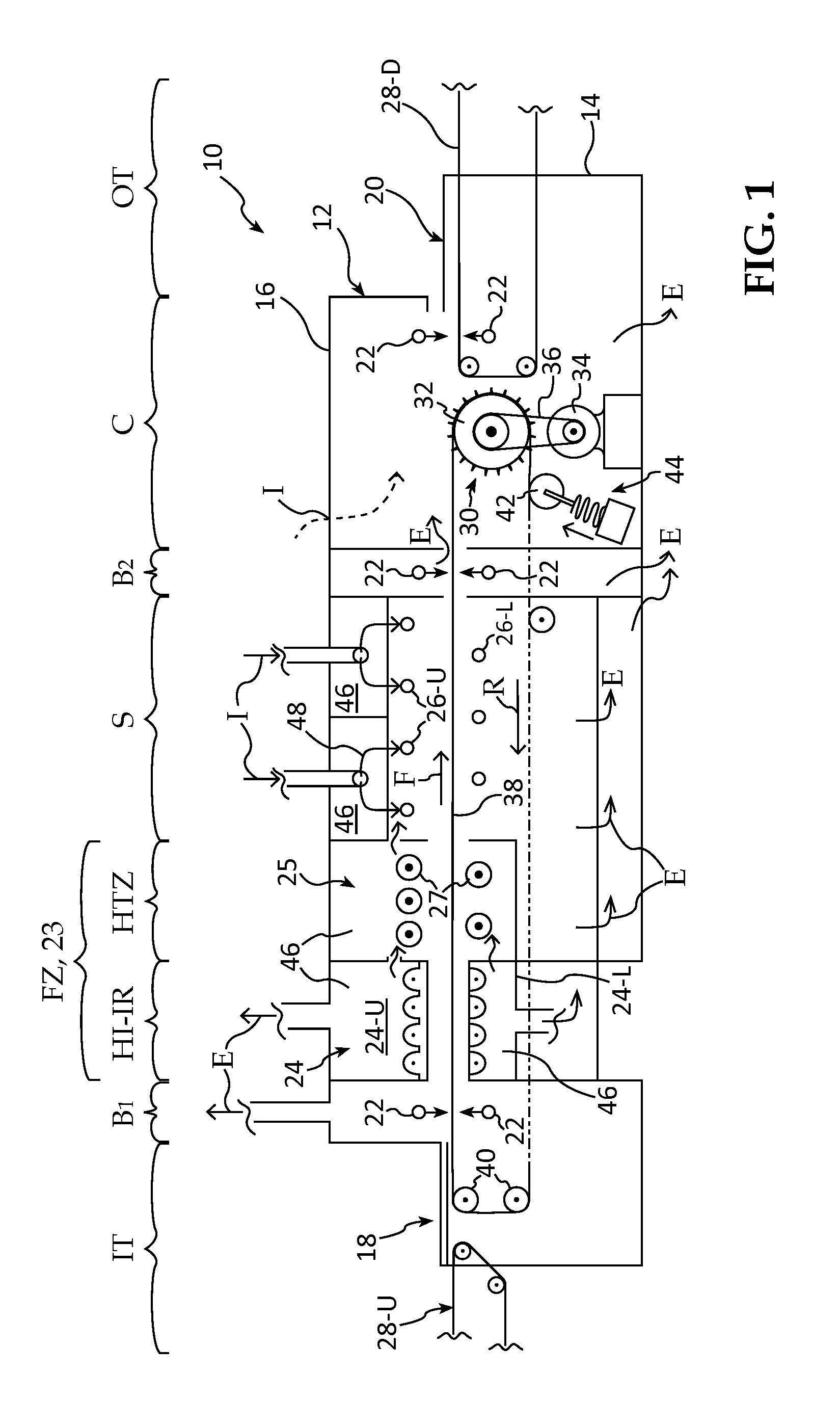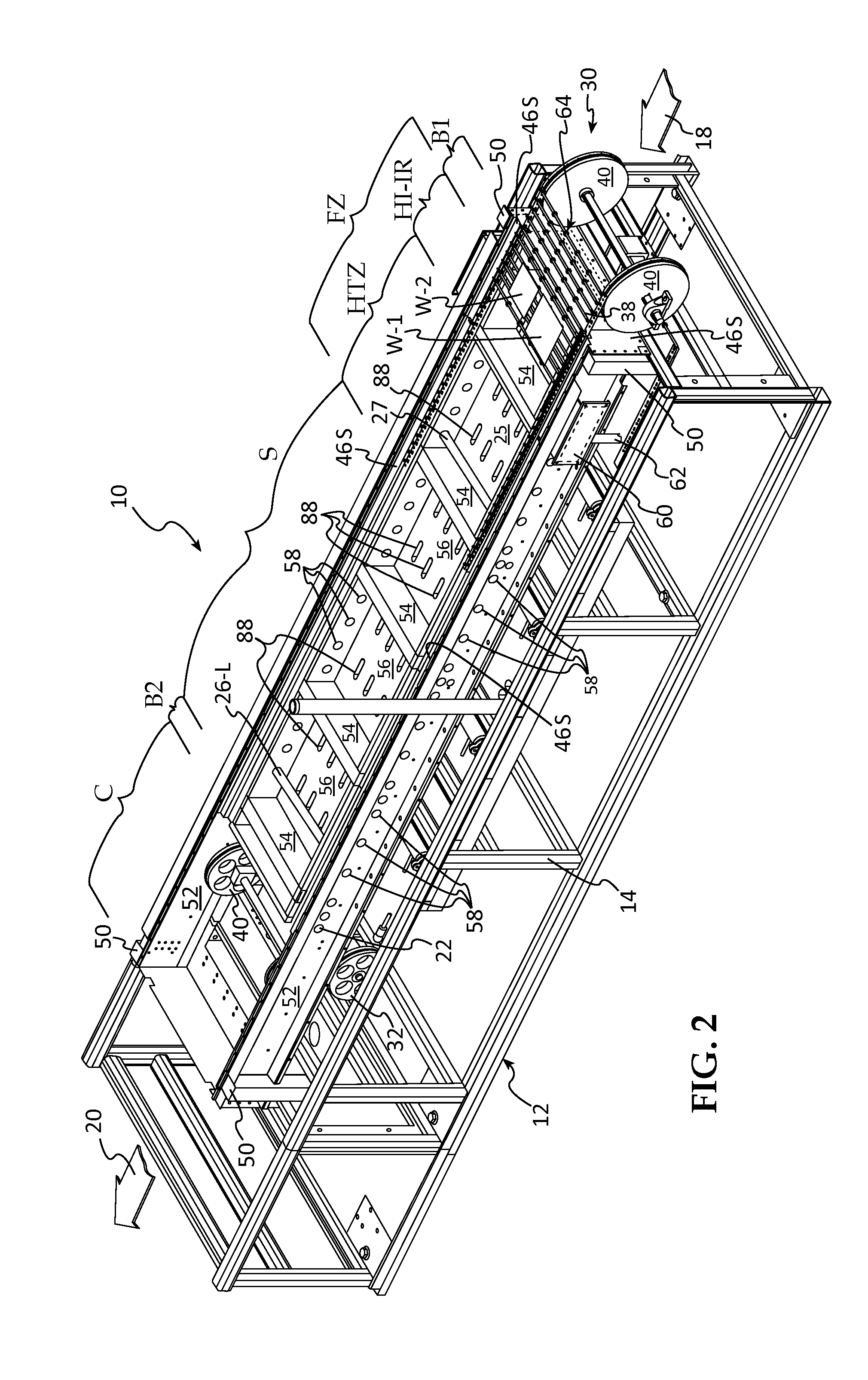Diffusion furnaces employing ultra low mass transport systems and methods of wafer rapid diffusion processing
a diffusion furnace and ultra-low mass transport technology, applied in ovens, ovens, lighting and heating apparatus, etc., can solve the problems of reducing cell efficiency or power output, cell efficiency loss, cell efficiency loss, etc., to increase heating rate, shorten life span, and increase conveyor belt speed
- Summary
- Abstract
- Description
- Claims
- Application Information
AI Technical Summary
Benefits of technology
Problems solved by technology
Method used
Image
Examples
first embodiment
[0083]The inventive furnace low-mass drive system 30, in a first embodiment, comprises a pin drive roller 32, driven by a motor 34 and chain or belt 36 disposed at the outlet (right) end of the furnace, wafer transport band assemblies 38, idler rollers 40 and a tension system 44 which includes a tension roller 42. The tension system 44 includes an automatic tension compensator spring acting as a dashpot to assist in preventing surges. Note that by this drive geometry, the bands 38 are pulled along the feed path, F, through the zones from left to right. This is implemented by the drive assembly 30 pulling the upper level bands from left to right (as indicated by Arrow F—forward).
[0084]The inventive furnace includes a plurality of plenums defining the Zones interior of the housing 12, and a plurality of air manifolds, including inlets and exhausts for ambient or pressurized air flow into the various Zones as shown by the arrows I (for Inlet), and E (for Exhaust), in order to maintain ...
second embodiment
[0108]FIGS. 7-10B are directed to the inventive ultra low mass transport system as employing a pair of spaced chains from which the wafer support wires and ceramic tubes are suspended. In FIG. 7, the description above for FIG. 1 applies for the parts numbered the same. Note that the IT and B1 zones are combined in this embodiment into a Ramp-Up Zone wherein the wafer temperature is raised from Room Temperature to about 500° C. to 900° C., the latter where the Ramp-Up Zone includes a HI-IR isolation lamp module. This is followed by the Firing Zone which raises the temperature to the diffusion processing temperature of about 950-1100° C., dependent on if P, or B, or both, are being diffused. As shown, the Firing Zone employs the disclosed exemplary resistive SiC elements. Firing set point temperature is retained in the Soaking Zone, the heating elements not being shown to prevent cluttering the drawing, but see FIGS. 1 and 5. As shown, the Cooling Zone is divided into two sub-zones, C...
PUM
 Login to View More
Login to View More Abstract
Description
Claims
Application Information
 Login to View More
Login to View More - R&D
- Intellectual Property
- Life Sciences
- Materials
- Tech Scout
- Unparalleled Data Quality
- Higher Quality Content
- 60% Fewer Hallucinations
Browse by: Latest US Patents, China's latest patents, Technical Efficacy Thesaurus, Application Domain, Technology Topic, Popular Technical Reports.
© 2025 PatSnap. All rights reserved.Legal|Privacy policy|Modern Slavery Act Transparency Statement|Sitemap|About US| Contact US: help@patsnap.com



